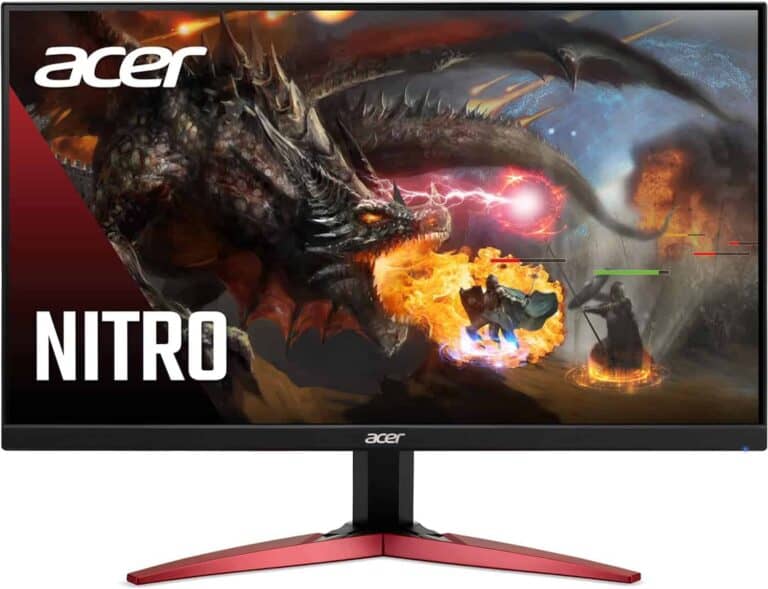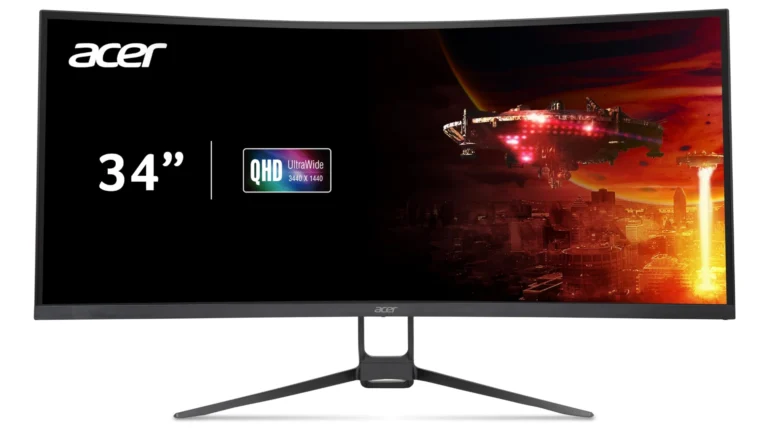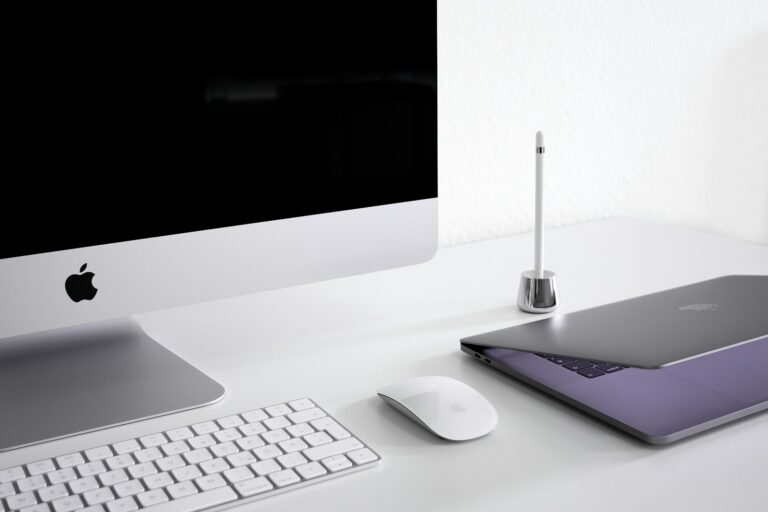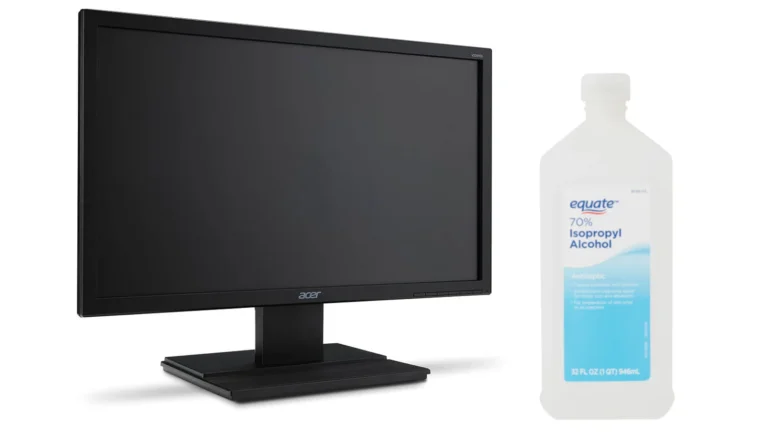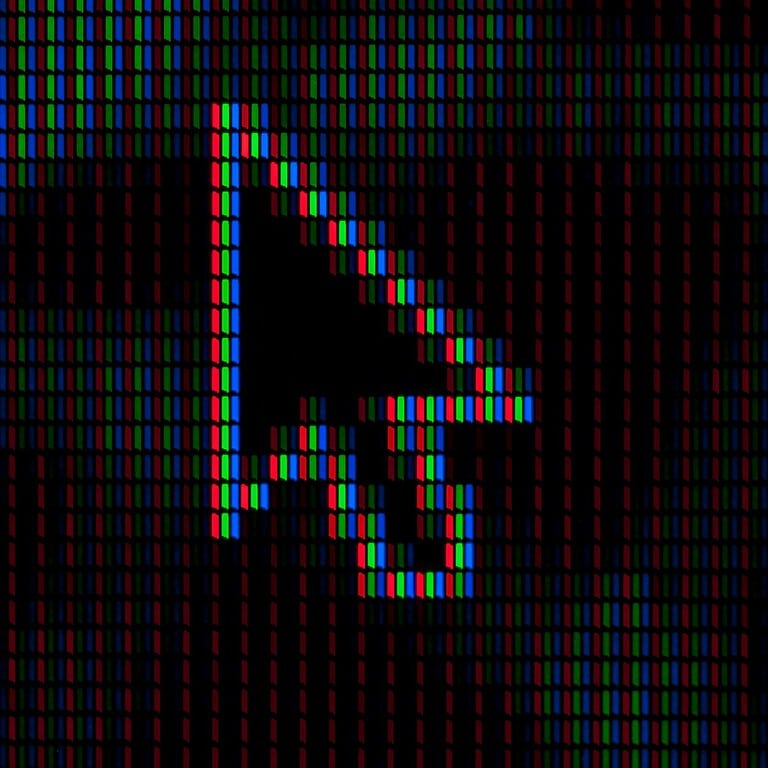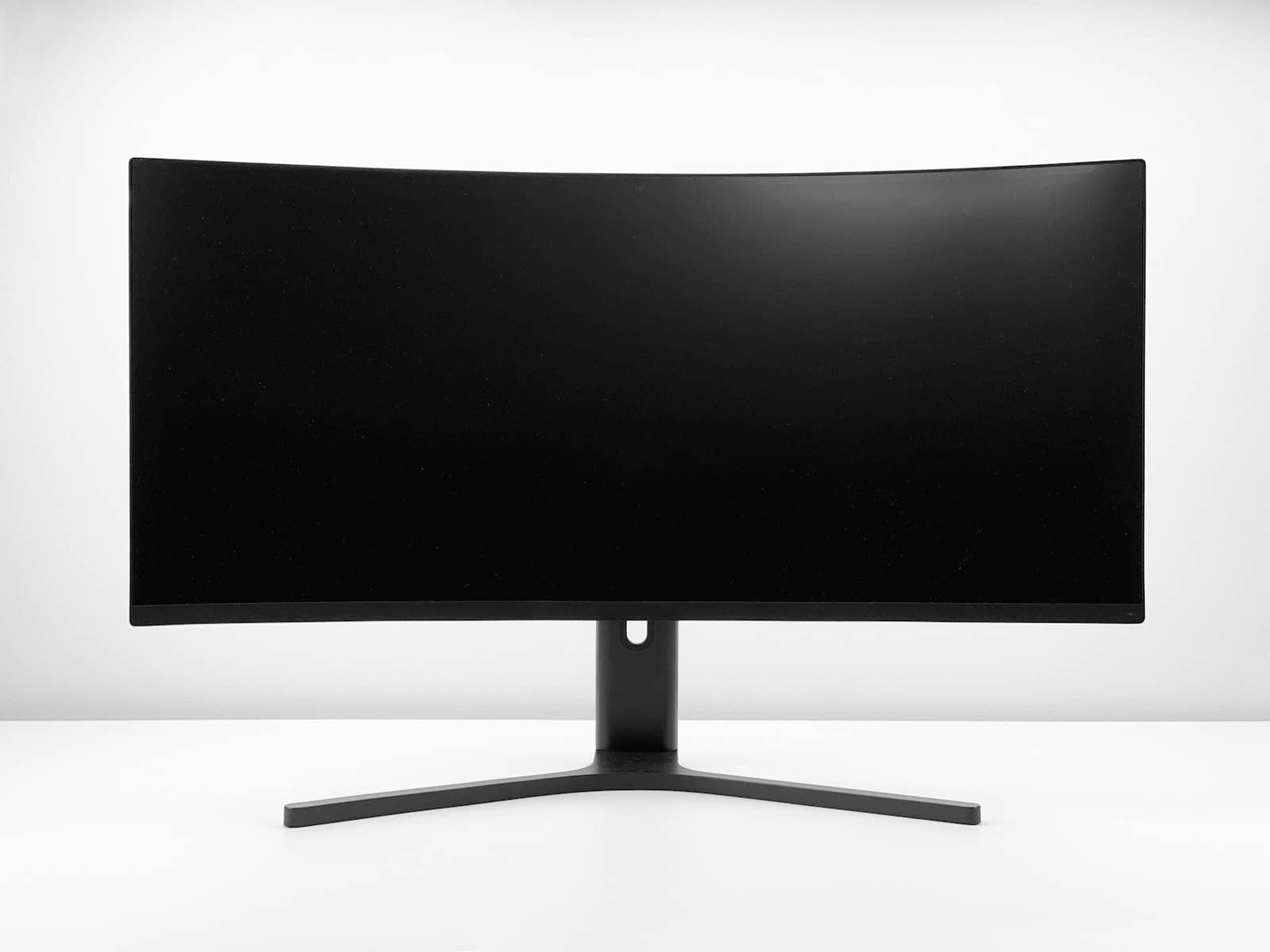
Monitors come in two distinct shapes: flat and curved. While flat monitors remain popular due to their traditional design and proven performance, curved displays offer a unique viewing experience that matches the natural curvature of human eyes.
Curved monitors provide a more immersive experience by wrapping around the viewer’s field of vision, while flat monitors excel in color accuracy and are more versatile for professional work. The choice between these two styles depends on specific use cases, with curved monitors showing advantages for gaming and entertainment, while flat panels maintain their position as the standard for content creation and office work.
The curvature of modern monitors ranges from subtle 4000R to more pronounced 1500R measurements, with the lower numbers indicating a deeper curve. This measurement represents the radius of the curve in millimeters, affecting how the screen fills the viewer’s peripheral vision.
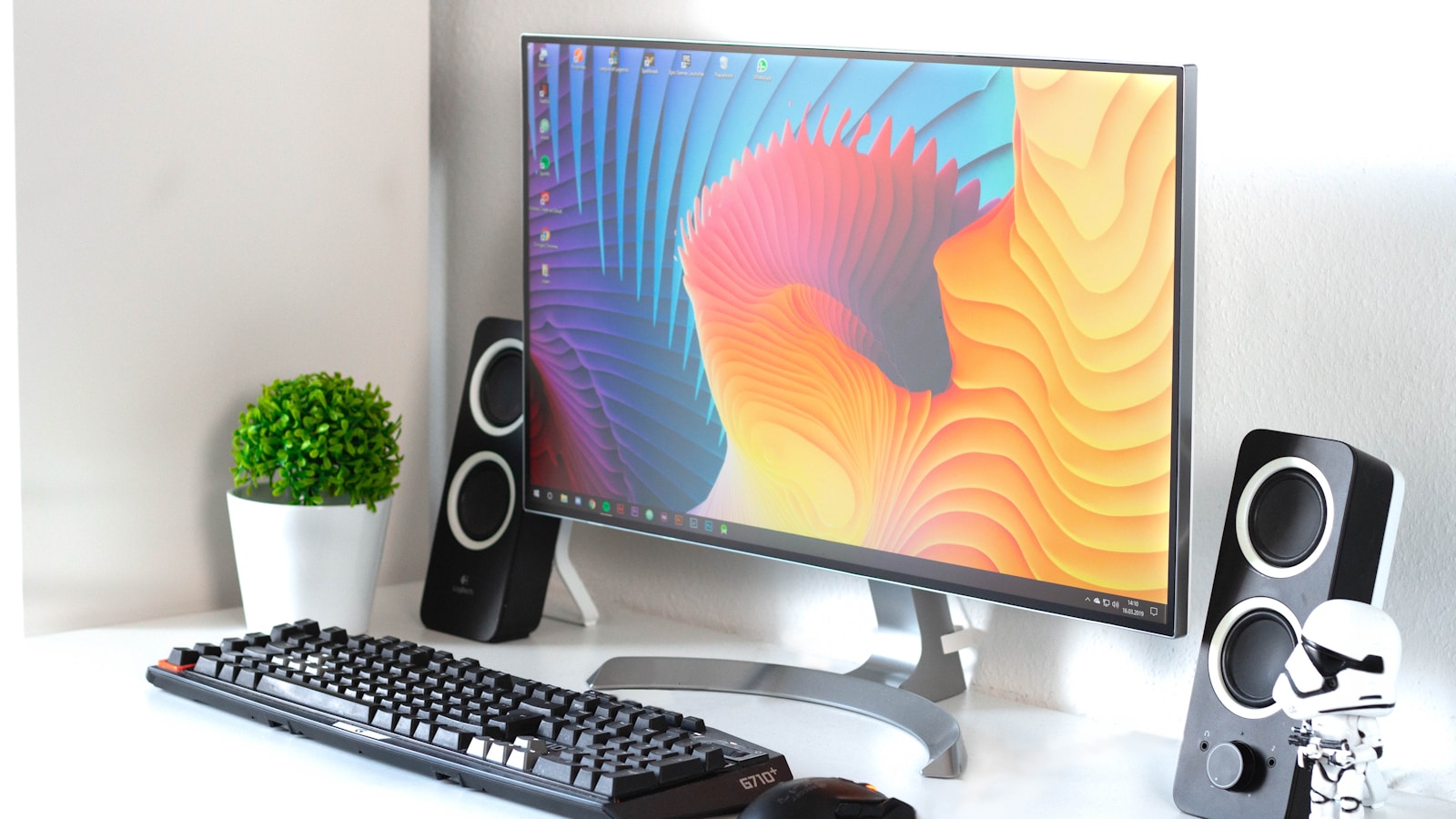
Choosing Your Display: Flat vs. Curved Monitors
Understanding the Differences
Flat monitors are the traditional standard. They offer a straightforward viewing experience. Curved monitors, on the other hand, have a concave shape. This curve is designed to mimic the natural curvature of the human eye’s field of vision. This difference in shape leads to some key distinctions in how these monitors perform.
Immersion and Field of View
Curved monitors often provide a more immersive experience. The curve wraps around your peripheral vision, making you feel more “in” the action, particularly in games and movies. Flat monitors offer a wider field of view, which can be beneficial for tasks that require seeing a large amount of information at once, like spreadsheets or design work.
Eye Strain and Comfort
Some users report less eye strain with curved monitors. The idea is that the curve reduces the amount your eyes need to adjust as they move across the screen. However, this isn’t universally true. Some people find curved screens uncomfortable. Flat monitors are a known quantity for most people, and their potential for eye strain is well-documented.
Image Distortion
Curved monitors can introduce some image distortion, especially at the edges of the screen. This is usually minimal, but it’s something to consider. Flat monitors, by their nature, don’t have this issue. The image on a flat monitor is consistent across the entire screen.
Best Uses
- Gaming: Curved monitors are often preferred for gaming due to their immersive quality.
- Productivity: Flat monitors are generally better for tasks where accurate image representation is crucial, such as graphic design or video editing.
- Media Consumption: Both types can be used for watching movies and TV shows, but curved monitors can provide a more cinematic experience.
Comparison Table
| Feature | Flat Monitor | Curved Monitor |
|---|---|---|
| Immersion | Lower | Higher |
| Field of View | Wider | More focused |
| Eye Strain | Potentially higher | Potentially lower |
| Image Distortion | None | Possible at edges |
| Best Use | Productivity, general use | Gaming, media consumption |
Choosing the Right Monitor
The best monitor for you depends on your needs. If you’re a serious gamer, a curved monitor might be a good choice. If you do a lot of work that requires precise visuals, a flat monitor is likely a better fit. Consider what you’ll be using the monitor for most and choose accordingly.
Beyond Flat and Curved: Ultrawide Monitors
Beyond the standard flat and curved options, ultrawide monitors have become increasingly popular. These monitors offer an extra-wide aspect ratio, providing more horizontal screen space. They can be either flat or curved. Ultrawide monitors are excellent for multitasking and offer a very immersive experience, especially in gaming. They are a good alternative if you find yourself needing more screen real estate.
Key Takeaways
- Curved monitors enhance immersion through wraparound viewing angles
- Flat monitors offer better versatility and consistent image quality
- Screen curvature measurements directly impact the viewing experience
Design and Ergonomics
The choice between flat and curved monitors is largely based on personal preference and intended use. Curved monitors offer an immersive experience, ideal for gaming and media, while flat monitors are better for tasks requiring precise image representation and a wider field of view.
It’s important to consider factors like eye strain and image distortion when selecting a display, focusing on how the monitor will be used and what features matter most.
The physical design and ergonomic features of monitors directly affect user comfort and productivity during extended use. Screen curvature and mounting flexibility play crucial roles in workspace optimization.
Curvature and Its Impact on Viewing Experience
Curved monitors replicate the natural curvature of the human eye, offering a more comfortable viewing experience. Common curvature ratings include 1000R, 1500R, and 1800R, with lower numbers indicating a more pronounced curve.
The 1000R curve matches the human eye’s shape most closely, reducing eye strain during long work sessions. This design maintains consistent viewing distances across the entire screen.
Users can sit 3-4 feet away from curved displays while maintaining clear visibility of all screen areas. The curved design minimizes glare by directing reflections away from the viewer’s eyes.
Space Requirements and Mounting Options
Curved monitors need more desk depth than flat displays due to their protruding center section. A standard curved 34-inch ultrawide monitor requires approximately 10-12 inches of desk depth.
Wall mounting curved monitors presents unique challenges. The curve creates uneven spacing between the wall and screen edges, requiring specialized mounting brackets.
Flat monitors offer more versatile mounting options. They sit flush against walls and can use standard VESA mounts without additional considerations.
Most modern monitors include anti-glare coatings and adjustable stands. Height adjustment ranges typically span 4-5 inches, while tilt ranges cover -5 to 20 degrees for optimal positioning in home office setups.
Visual Performance and Technology
Modern monitor technologies offer distinct visual characteristics and performance metrics that affect image quality, motion handling, and color reproduction.
Color Accuracy and Image Quality
IPS panels deliver superior color accuracy and wider viewing angles compared to VA panels. These features make IPS displays ideal for content creation and professional work.
VA panels excel in contrast ratios, producing deeper blacks and more vibrant colors. This technology creates more immersive visuals, especially in darker environments.
HDR support varies between models regardless of panel type. Premium monitors support HDR400 or higher, enhancing brightness and color depth for more lifelike images.
Curved monitors can introduce minor image distortion at the edges. This effect is more noticeable in screens with aggressive curvature ratios like 1000R.
Refresh Rates and Response Times
Most current flat and curved monitors support refresh rates of 144Hz or higher. Gaming-focused models reach up to 360Hz for ultra-smooth motion.
Response times have improved significantly in both display types. Modern panels achieve 1ms GTG (Gray-to-Gray) response times, reducing motion blur and ghosting.
VA panels typically show more ghosting in fast-moving scenes compared to IPS displays. This difference becomes less noticeable in newer monitor models with advanced overdrive settings.
LED backlighting technology has evolved to include local dimming zones. This feature improves contrast and reduces backlight bleeding in both curved and flat displays.
Usage and Application
Different monitor types excel in specific scenarios based on their inherent characteristics and design features. The choice between curved and flat displays depends heavily on the intended use case and user preferences.
Gaming and Entertainment
Curved monitors create deeper gaming immersion through their wrap-around design. The 1500R to 1800R curvature matches natural eye movement, reducing eye strain during long gaming sessions.
The curved design works exceptionally well with ultrawide 21:9 aspect ratios, providing expanded peripheral vision in racing games and first-person shooters.
Many curved gaming monitors feature high refresh rates of 144Hz or higher, plus AMD FreeSync or NVIDIA G-Sync for smooth gameplay without screen tearing.
The optimal viewing distance for curved gaming monitors is 2-3 feet, making them perfect for desk setups.
Professional and Creative Work
Flat monitors remain the standard for professional work due to their accurate image representation. Content creators and graphic designers benefit from minimal image distortion on flat panels.
Multi-monitor setups are easier to configure with flat screens, as bezels align perfectly. This makes them ideal for spreadsheets, coding, and document comparison.
Video editors and 3D modelers often prefer flat screens for precise work. The lack of curvature ensures straight lines appear straight, critical for technical tasks.
Flat monitors typically have better anti-glare coatings and produce fewer reflections in bright office environments.
Frequently Asked Questions
Curved and flat monitors each excel in different scenarios, with distinct advantages in gaming, productivity, and viewing comfort based on specific use cases and user preferences.
What are the advantages of using a curved monitor for gaming?
Curved monitors create deeper game immersion through their wrap-around effect. The curved display matches the natural field of view of human eyes.
These monitors minimize viewing angle distortion at screen edges. This feature proves especially valuable in racing games and flight simulators.
The curved design can make game worlds feel more three-dimensional and engaging. Players often report a stronger sense of being “in the game.”
Can a curved monitor improve productivity for office work?
Curved monitors can reduce eye movement needed to view screen edges. This design helps users scan documents and spreadsheets more efficiently.
The curved screen maintains consistent viewing distances across the display. This uniformity benefits users who work with multiple windows side by side.
Text legibility can suffer on curved screens when viewing documents in full screen. Many office workers prefer flat monitors for text-heavy tasks.
Are there any disadvantages to using a curved monitor for daily computing tasks?
Curved monitors create glare and reflections more noticeably than flat screens. Office lighting placement becomes more critical with curved displays.
Wall mounting curved monitors presents additional challenges. The curved design requires more careful positioning and specialized mounts.
These monitors cost more than comparable flat models. The price difference can be significant for larger screen sizes.
How do curved and flat monitors compare in terms of eyestrain and viewing comfort?
Curved screens match natural eye curvature, potentially reducing eye fatigue. The consistent viewing distance helps maintain focus across the display.
Flat monitors offer more predictable image geometry. This consistency benefits users who work with precise visual tasks.
Monitor size impacts viewing comfort significantly. Larger curved screens provide more noticeable benefits for reducing eye strain.
What factors should be considered when choosing a monitor for FPS gaming?
Response time and refresh rate matter more than screen curvature for FPS games. Look for 1ms response times and 144Hz minimum refresh rates.
Screen resolution affects both visual quality and system requirements. 1440p offers a good balance between detail and performance.
Panel type influences color accuracy and response times. TN panels provide fastest response times but inferior color reproduction.
How does the viewing experience differ between flat and curved monitors?
Curved monitors create a more immersive field of view. The curve wraps content around the viewer’s perspective.
Flat monitors display content without geometric distortion. This makes them ideal for design work and content creation.
Multiple viewer scenarios favor flat screens. Curved monitors show more distortion when viewed from angles.

